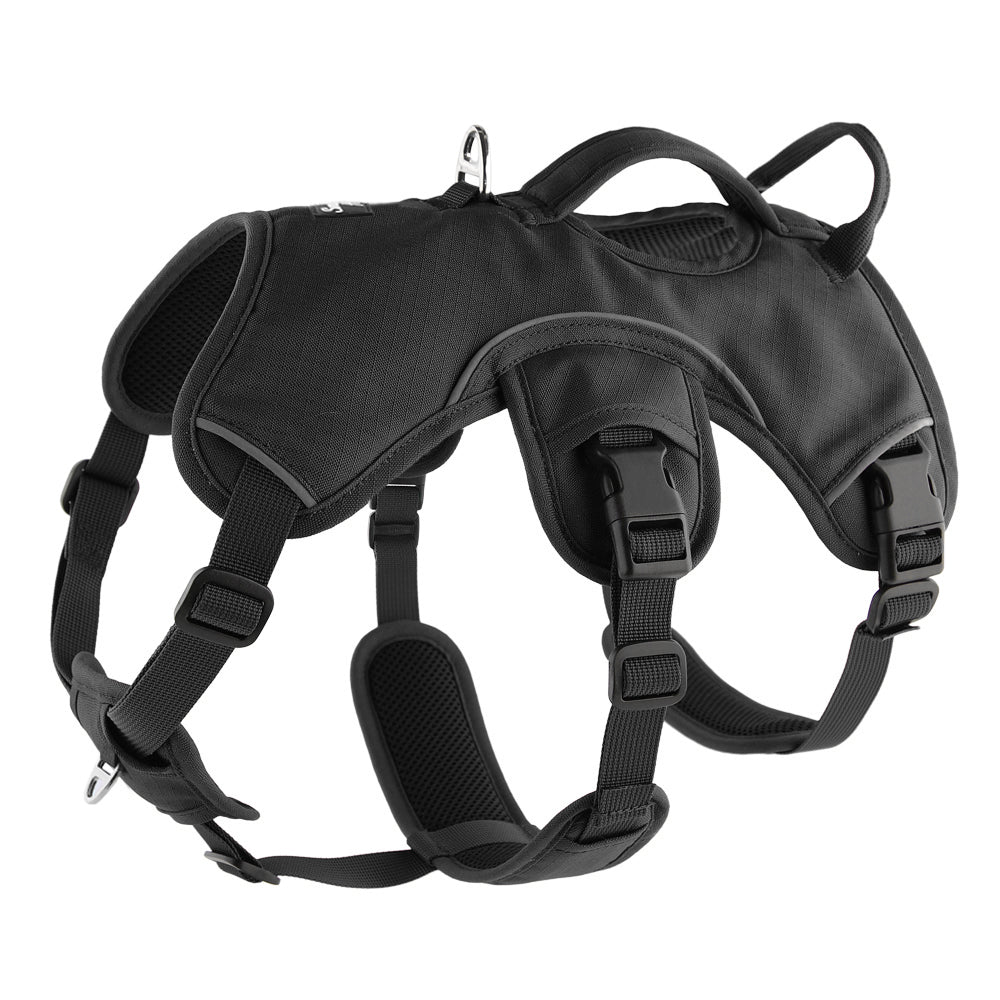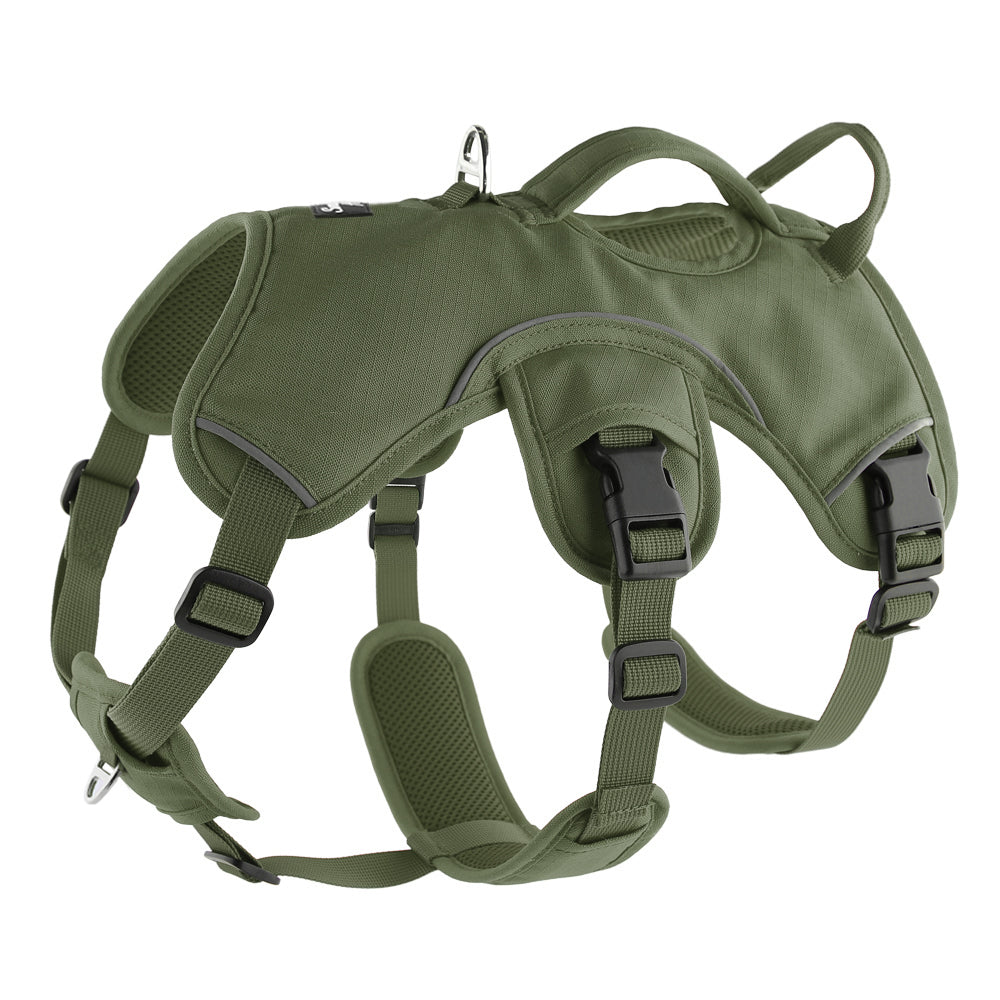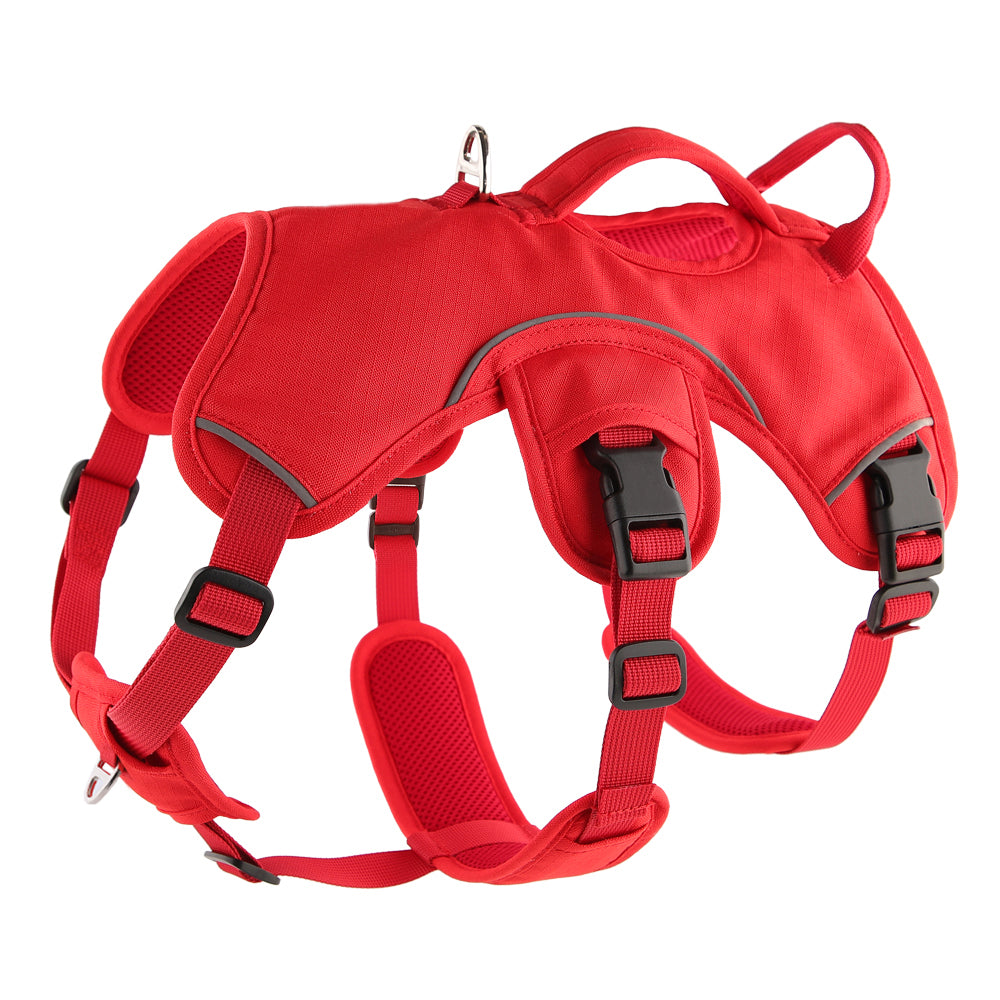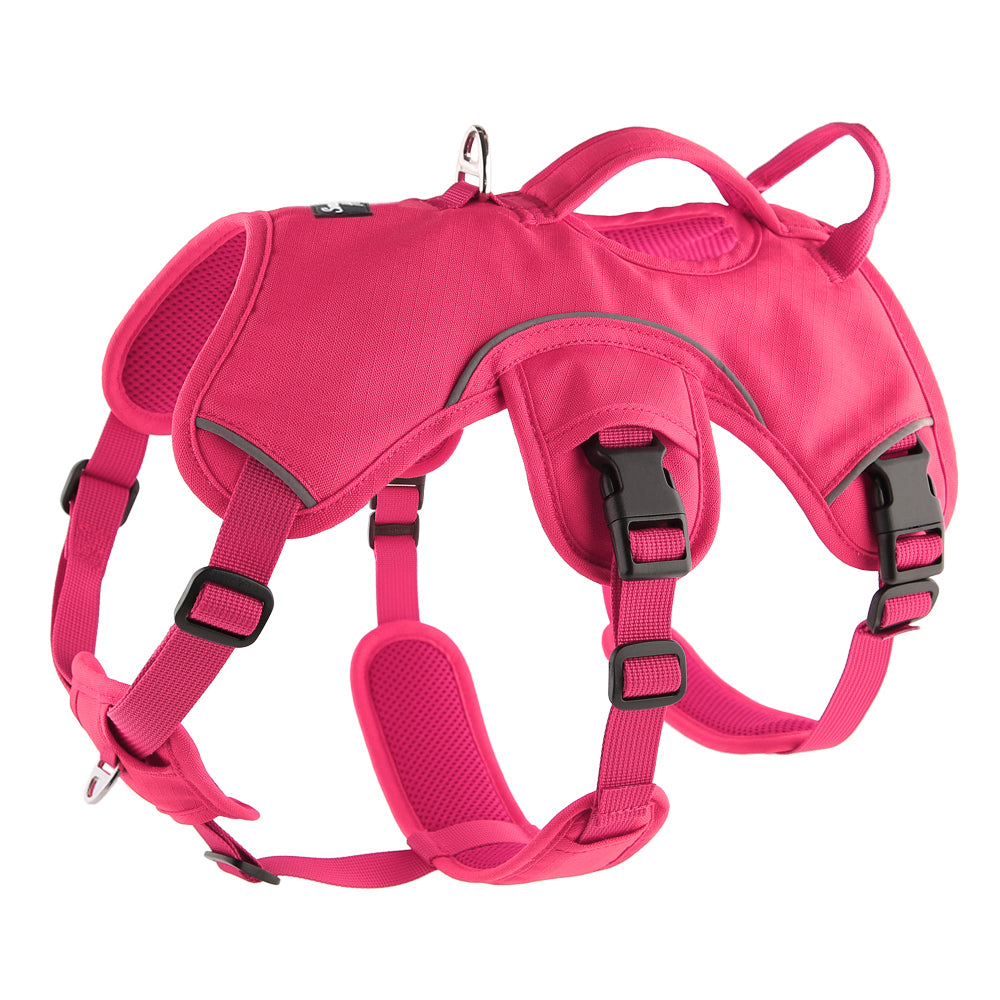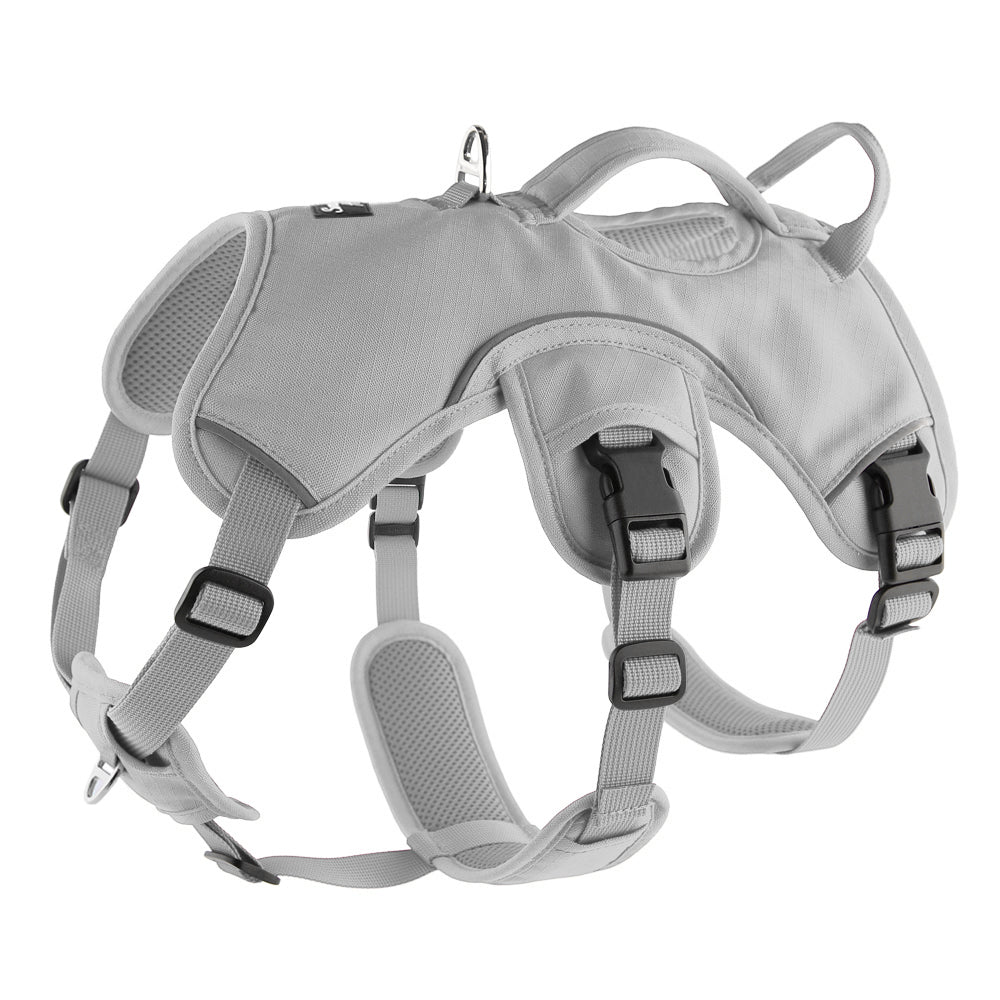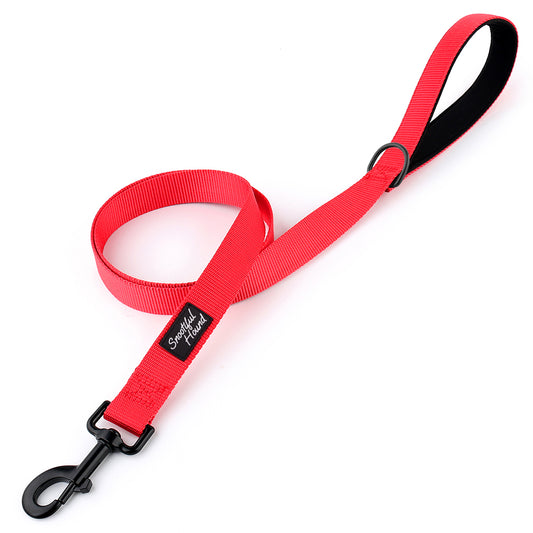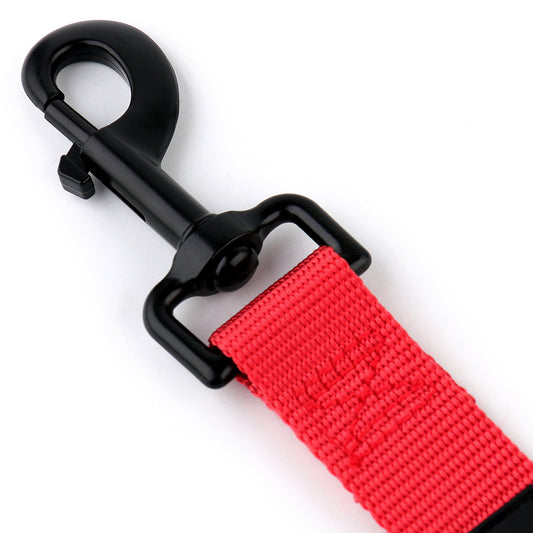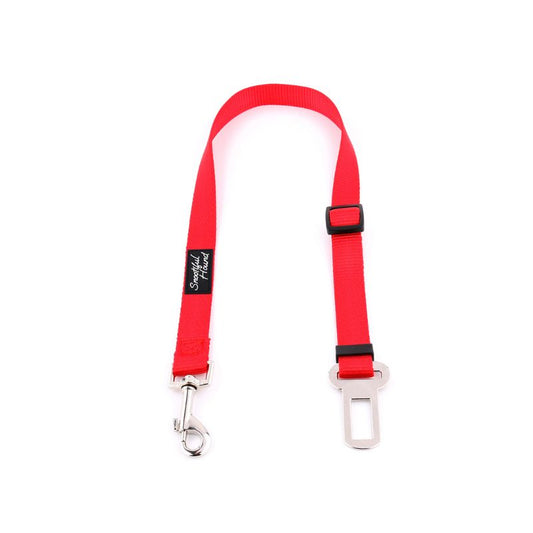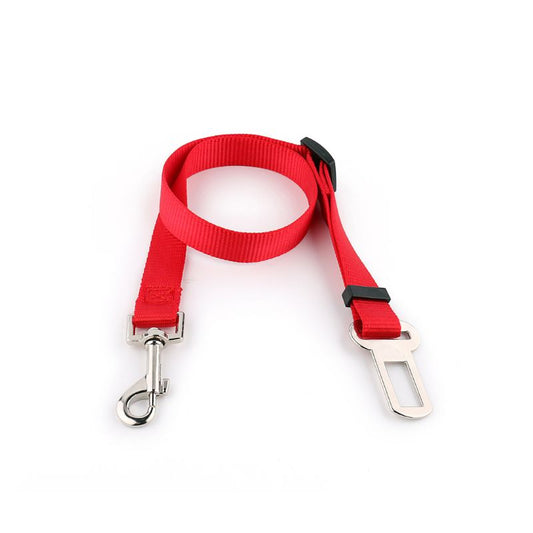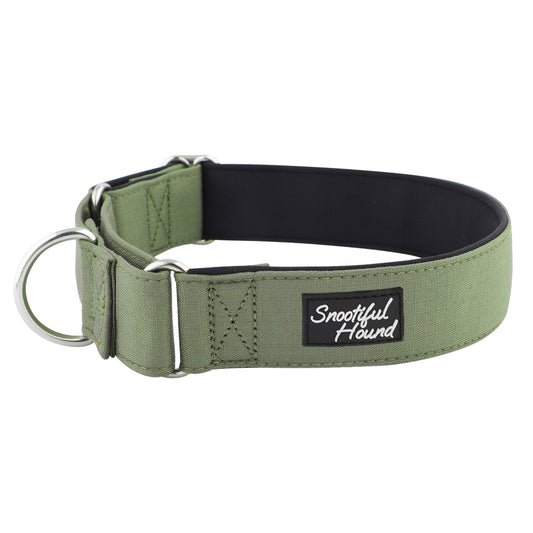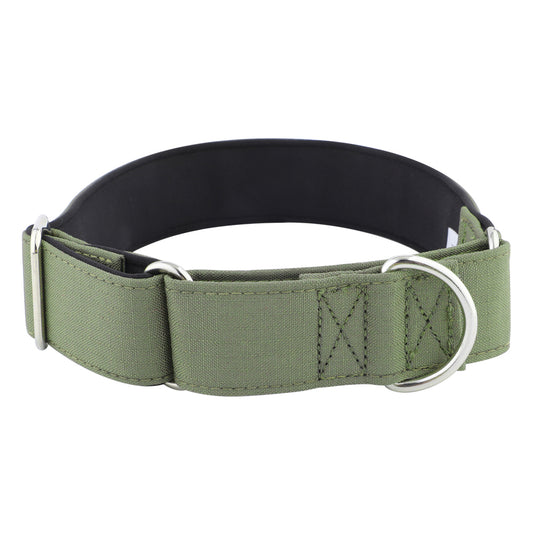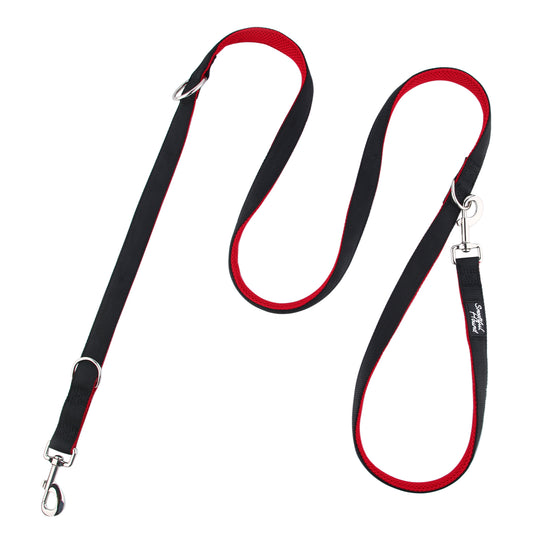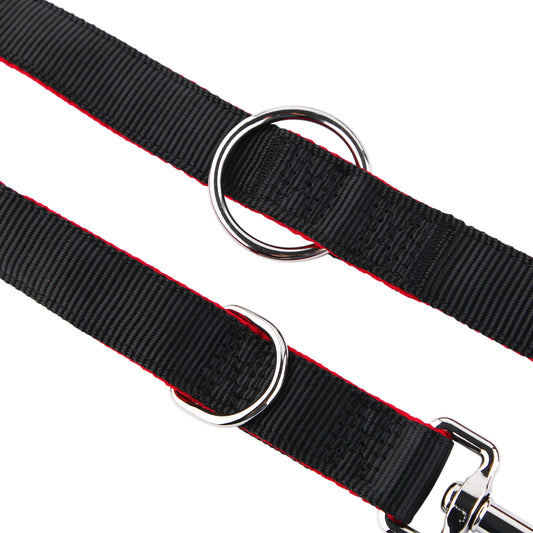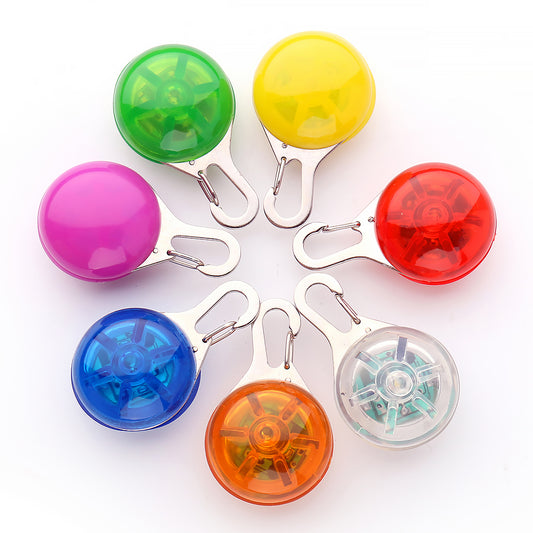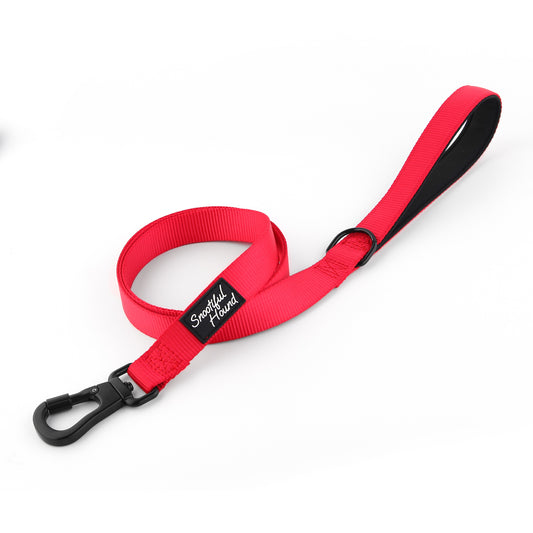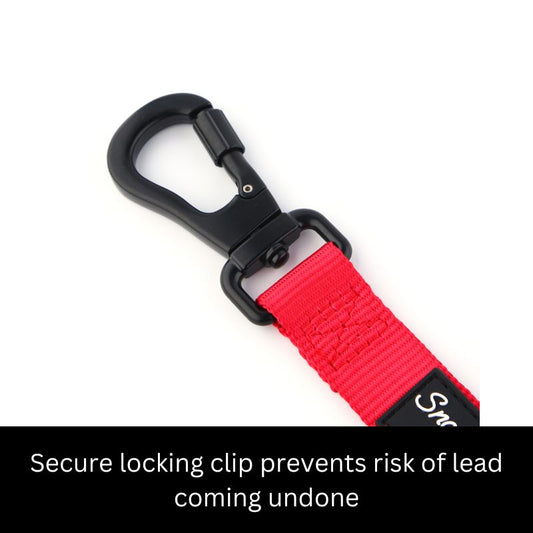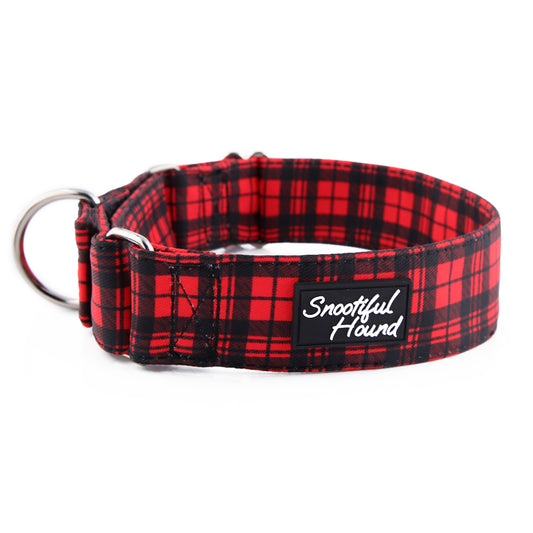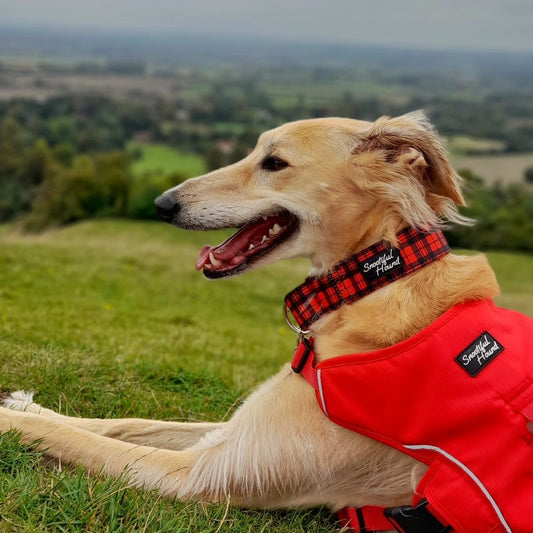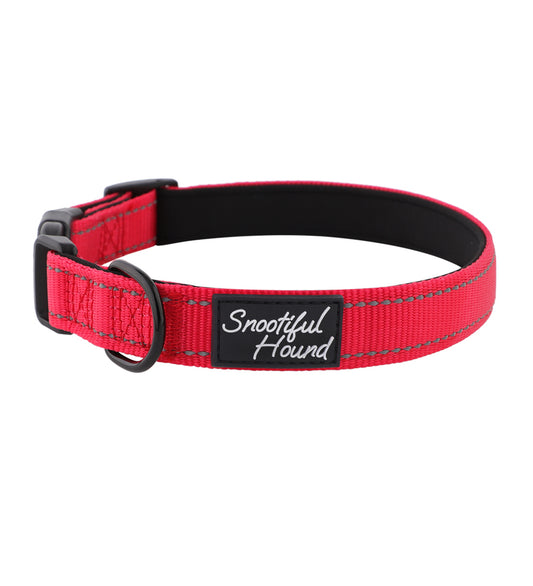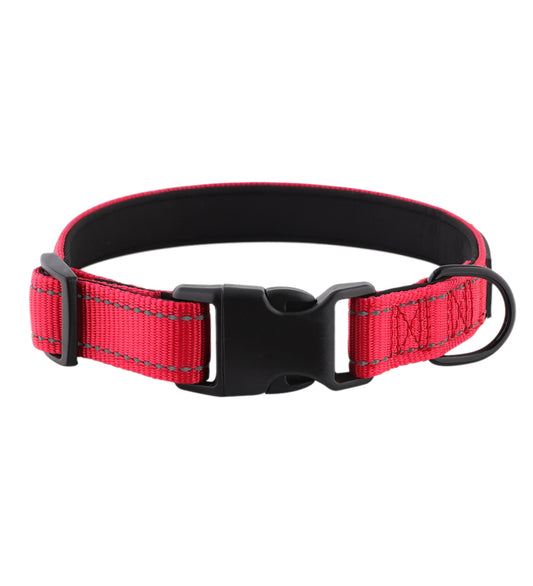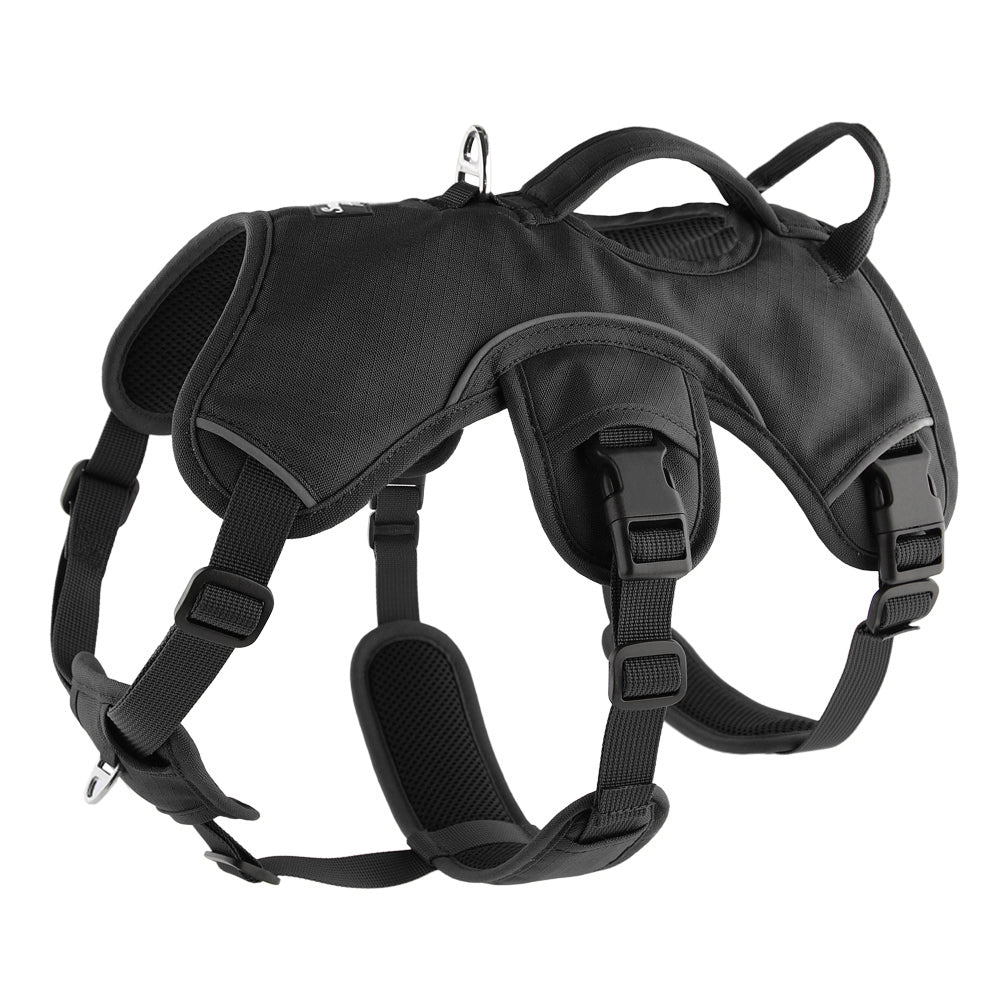
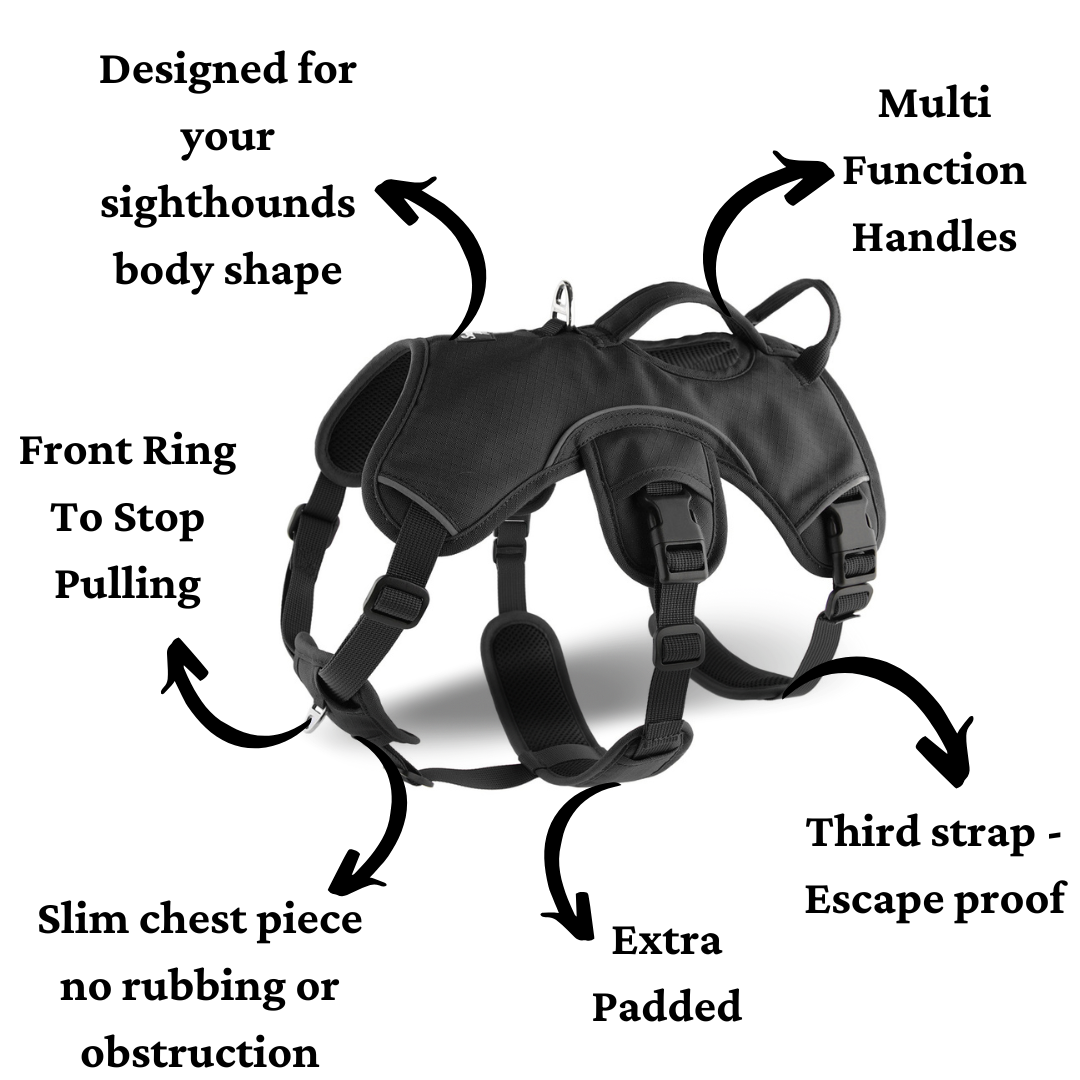
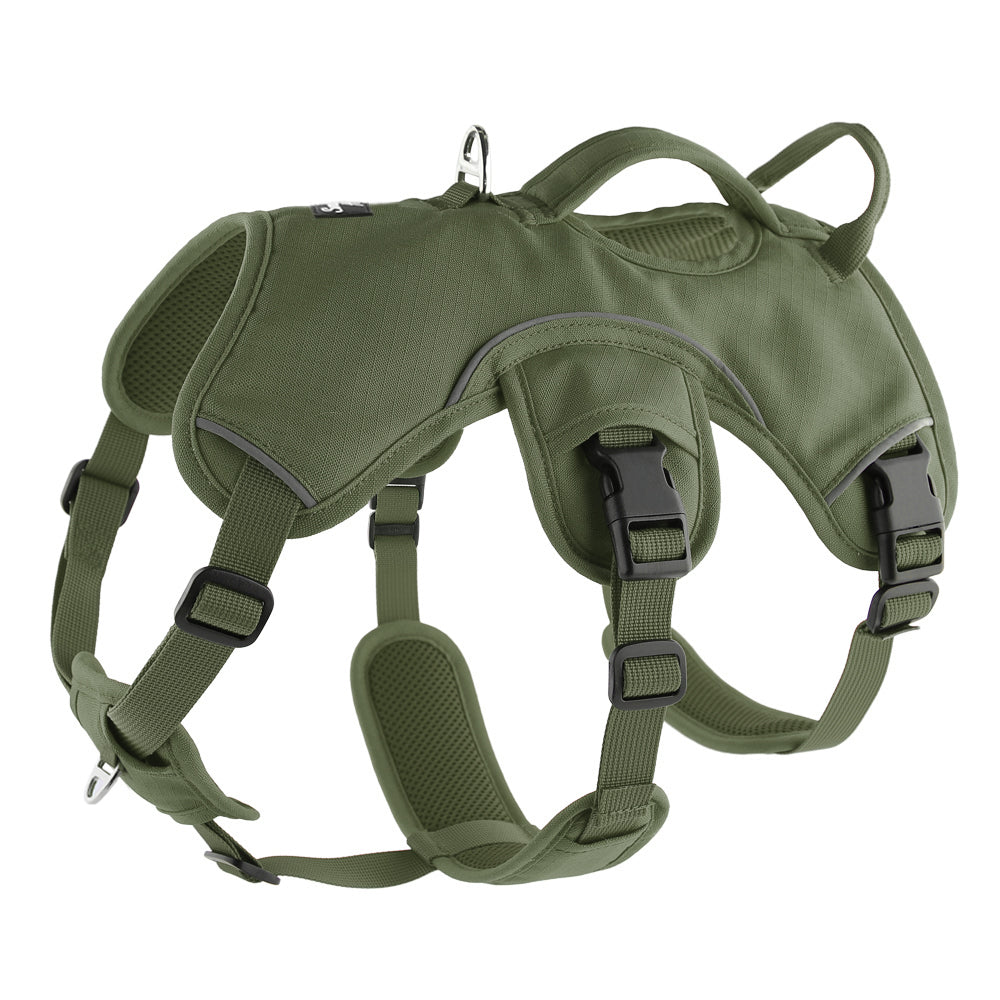
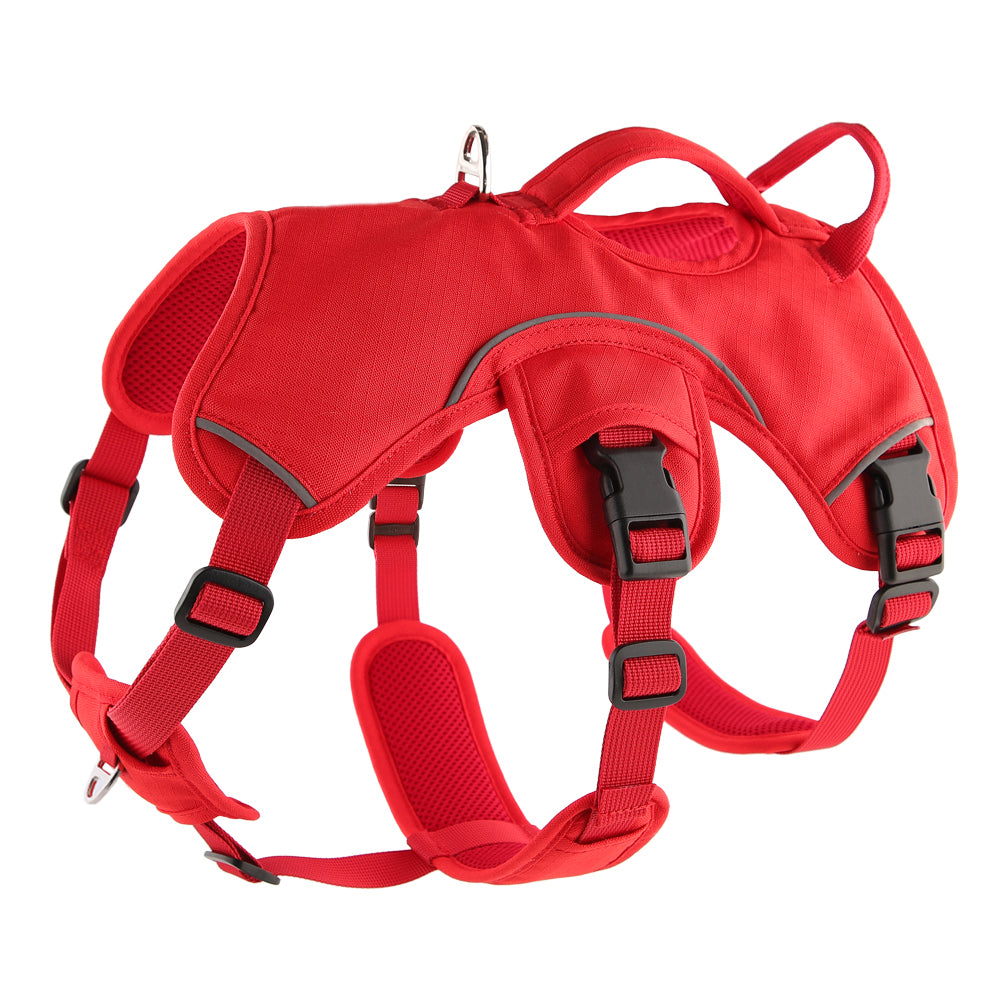
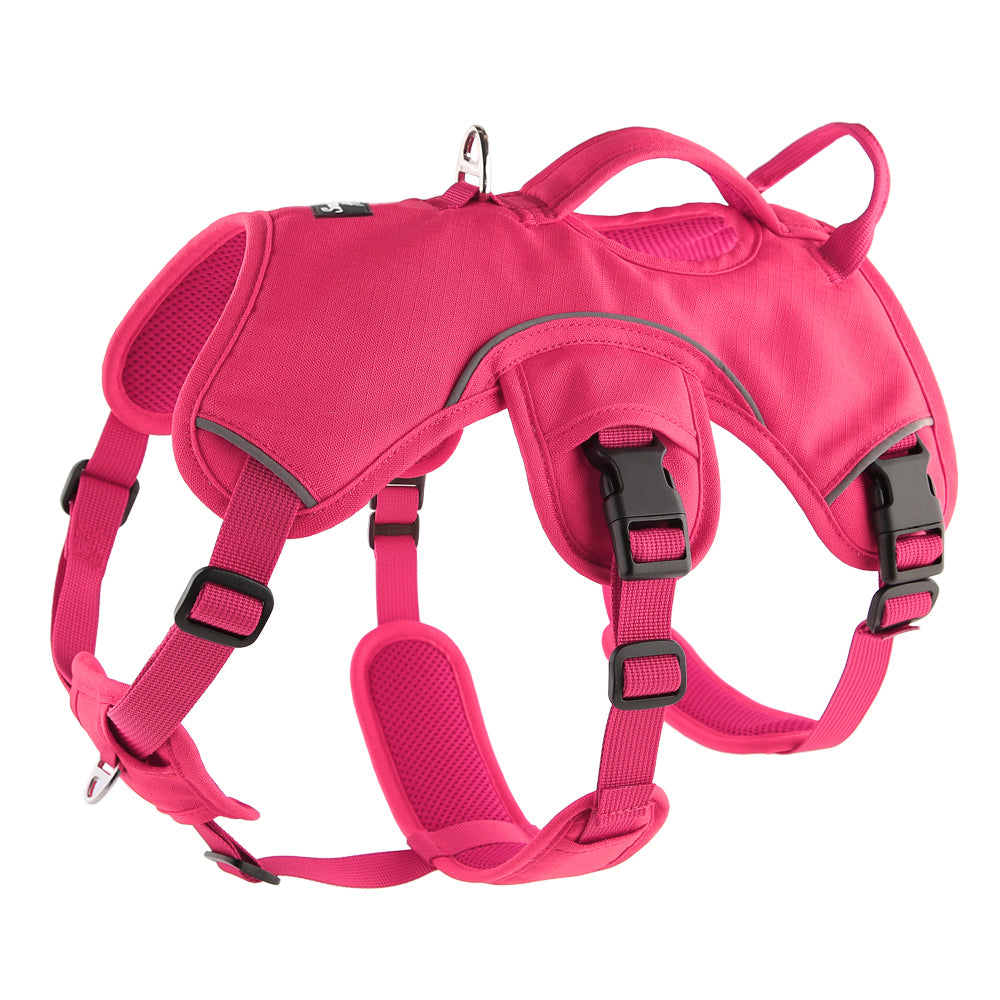
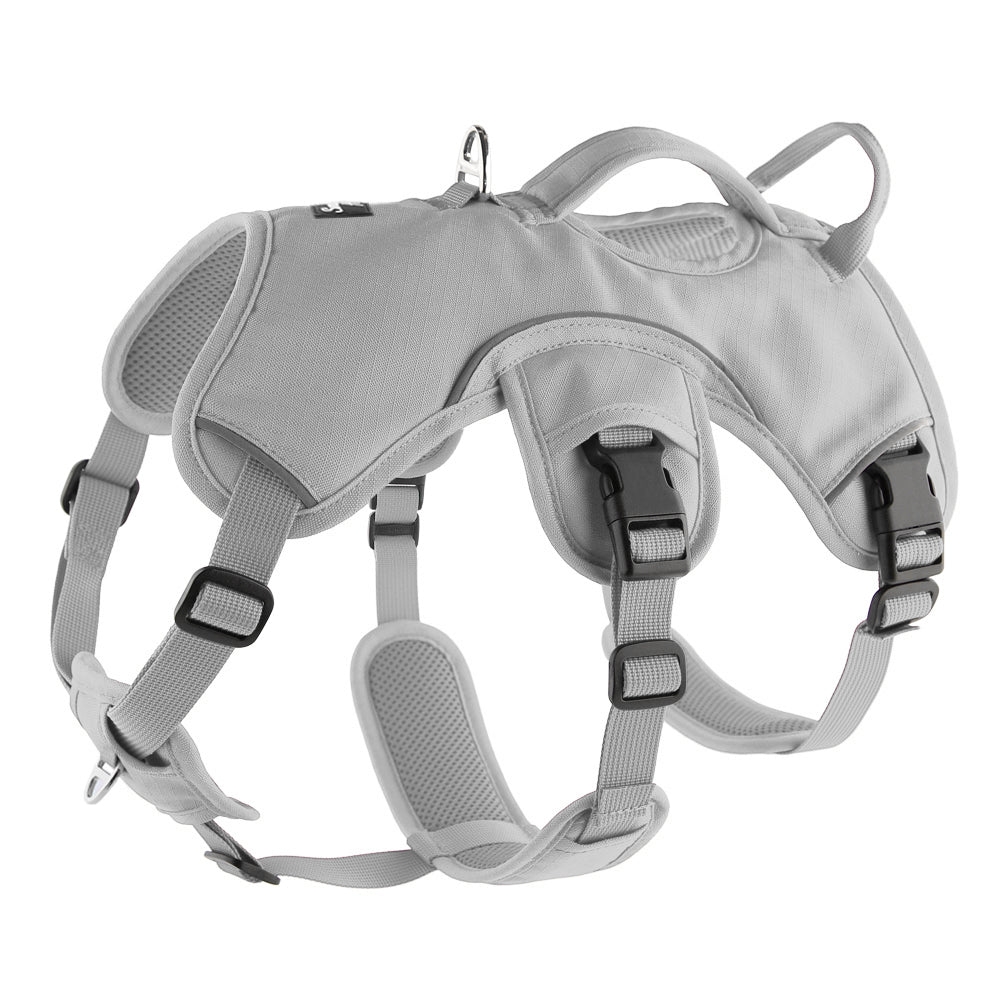
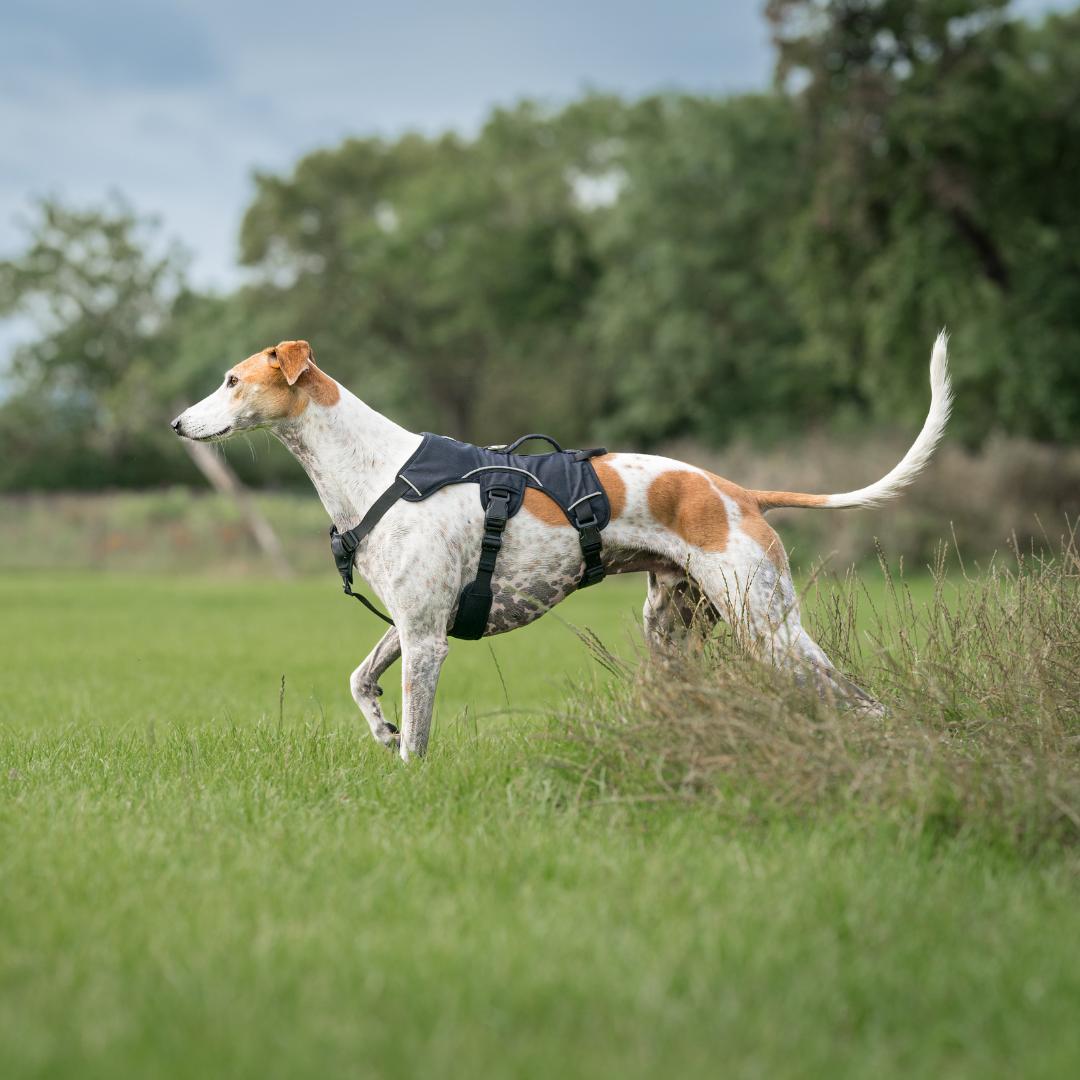
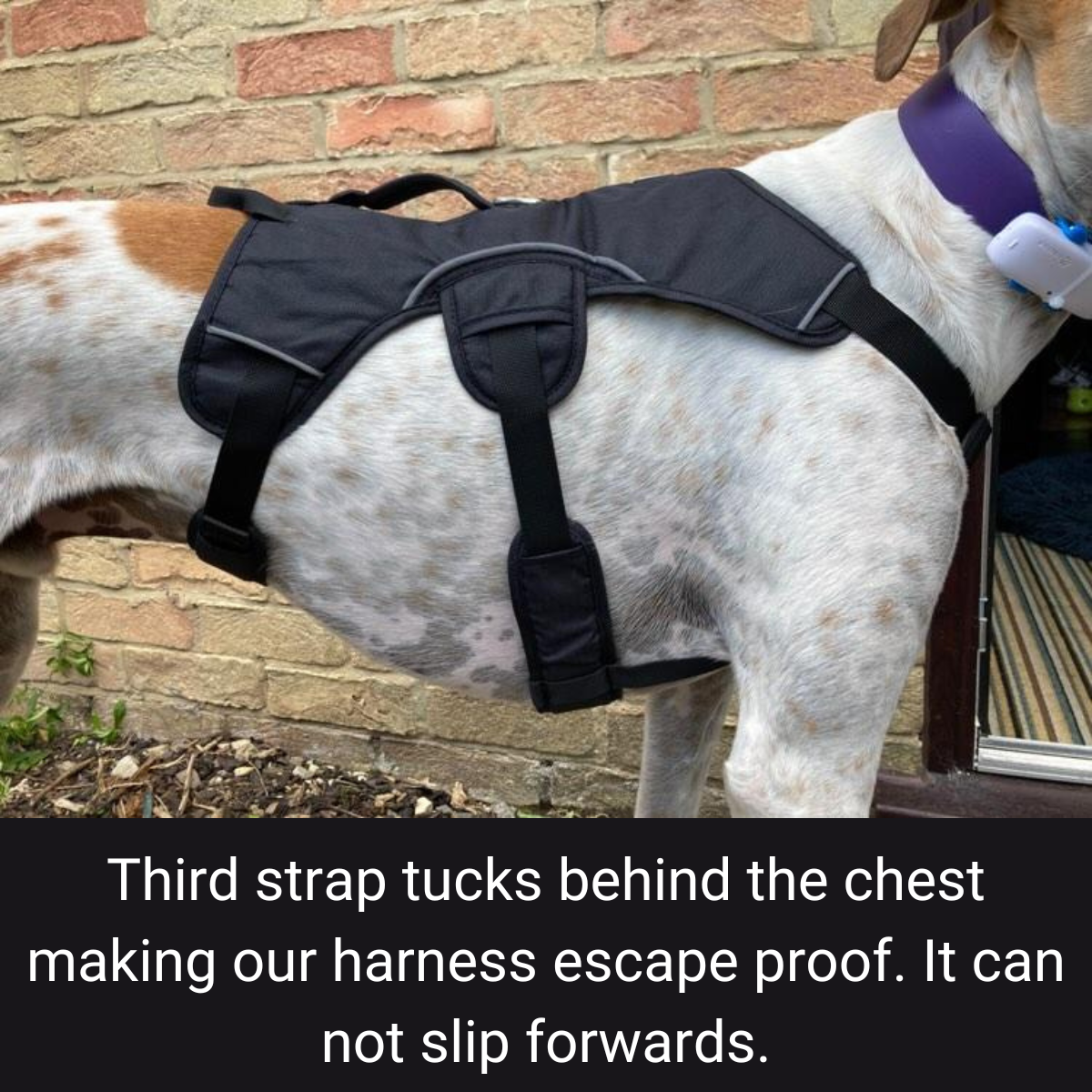
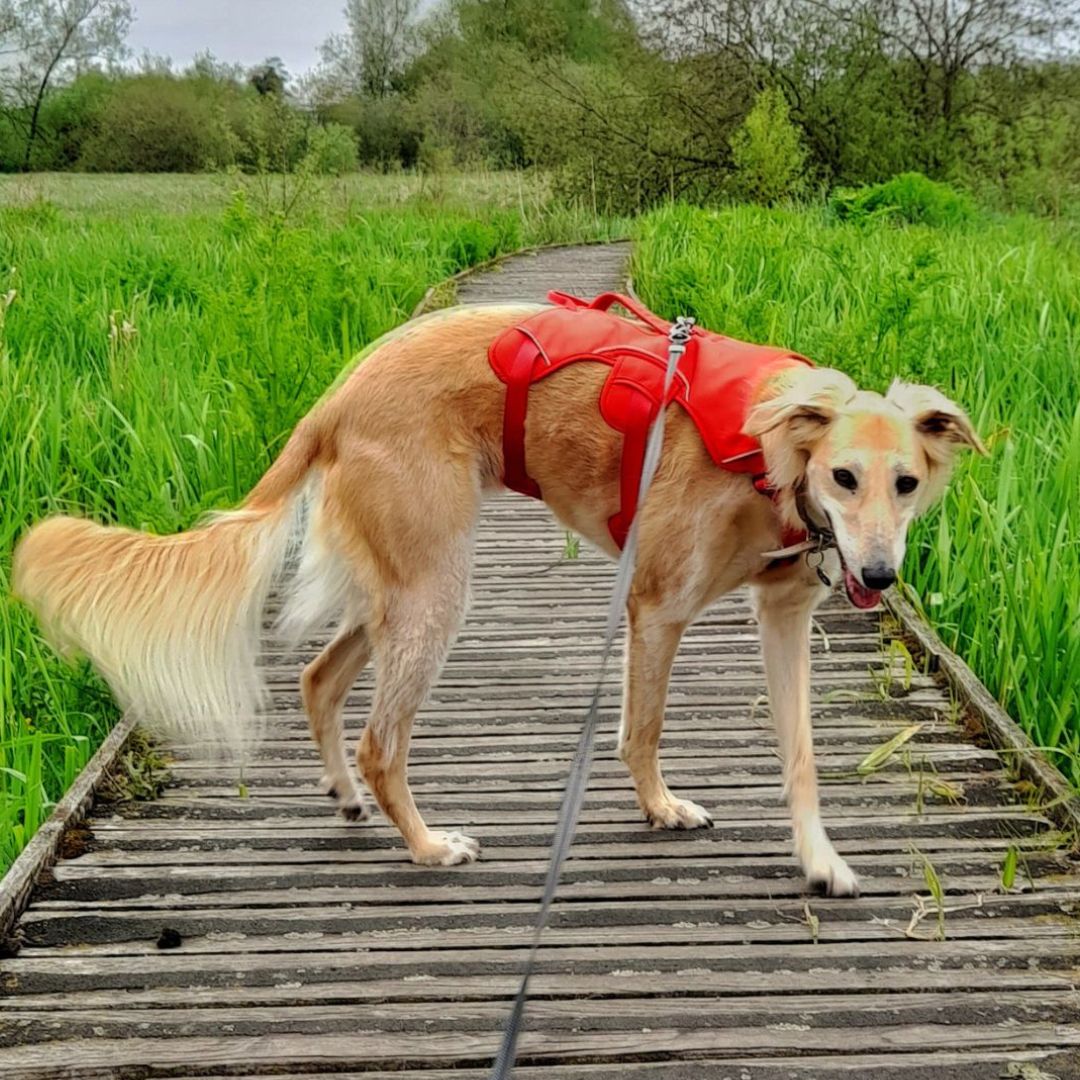
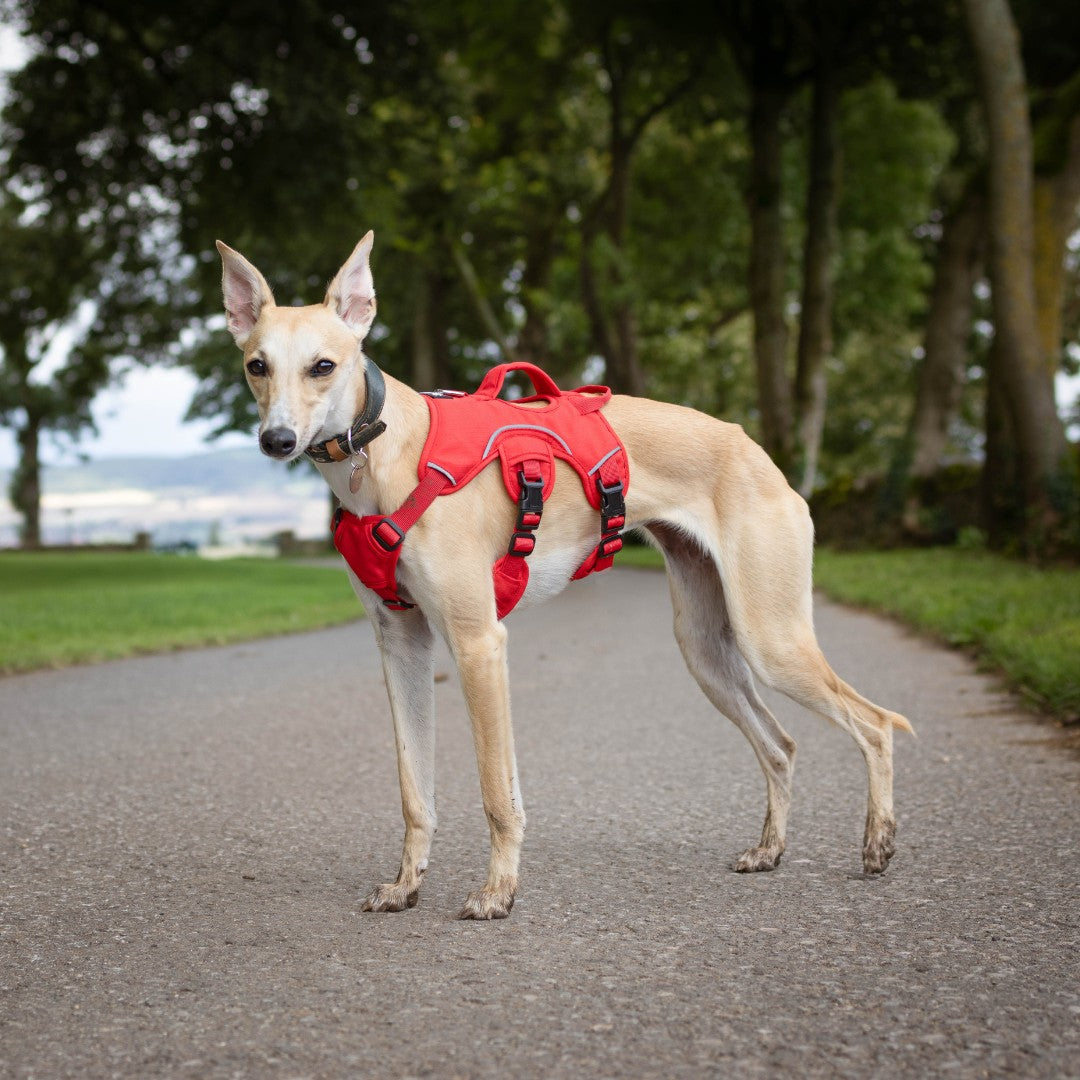
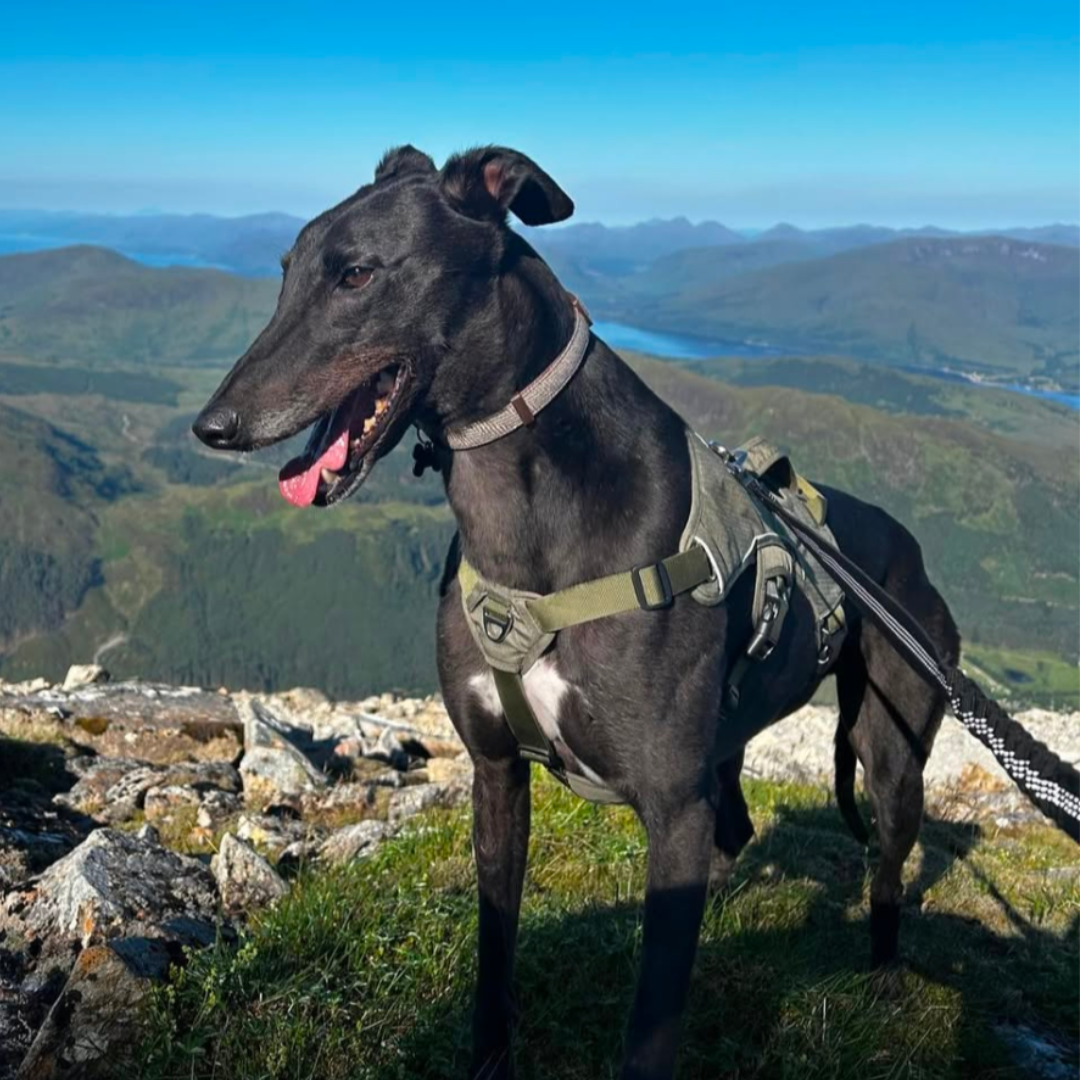
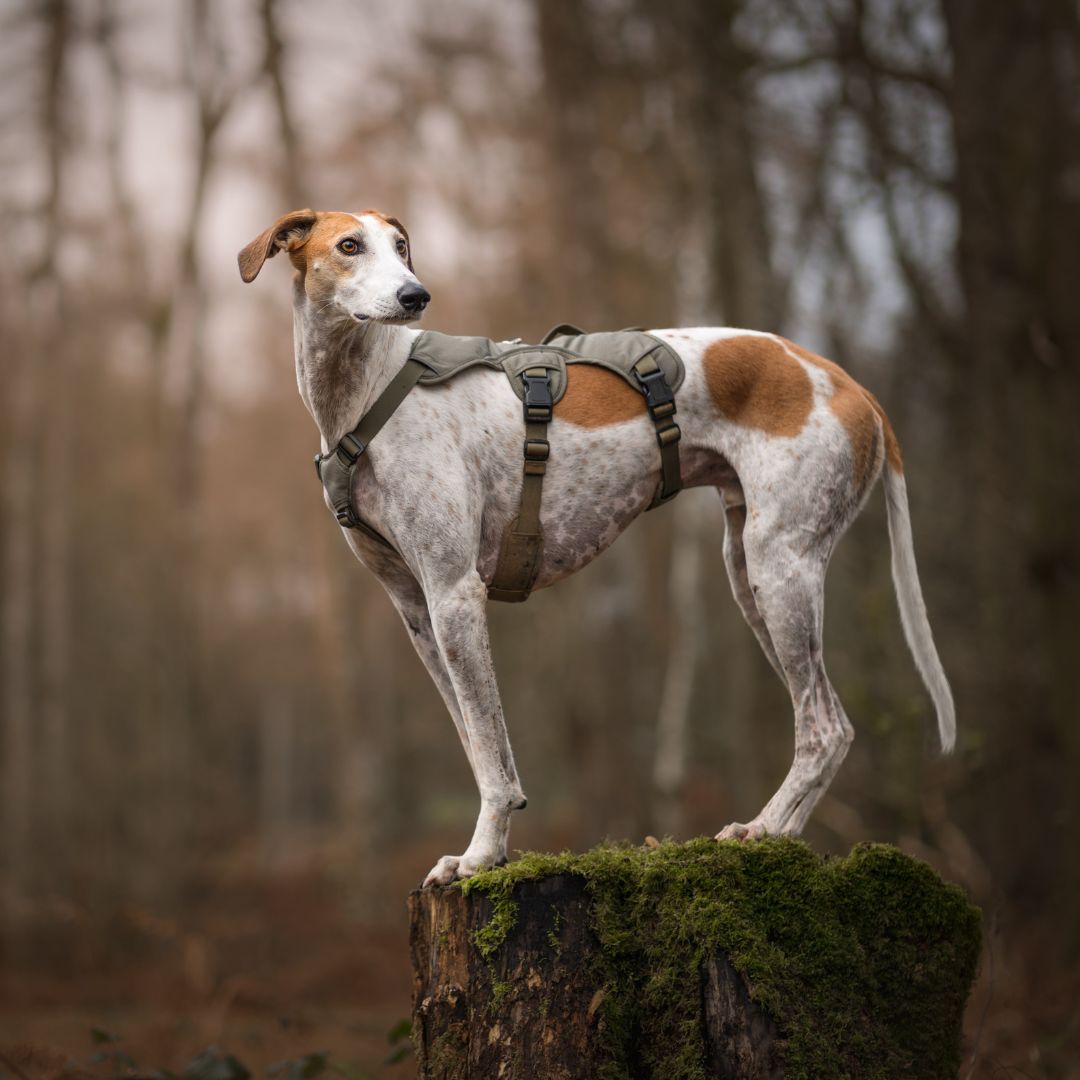














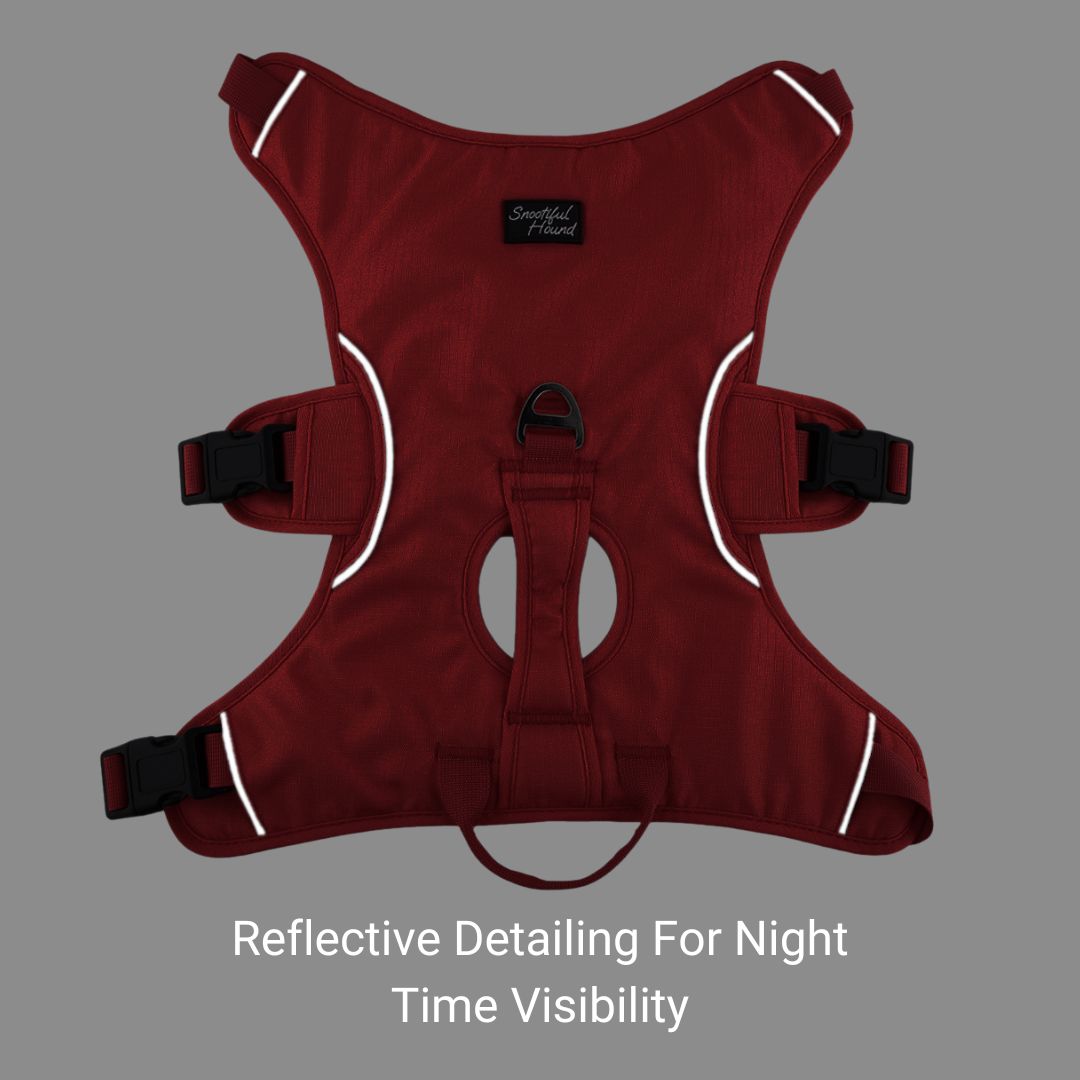
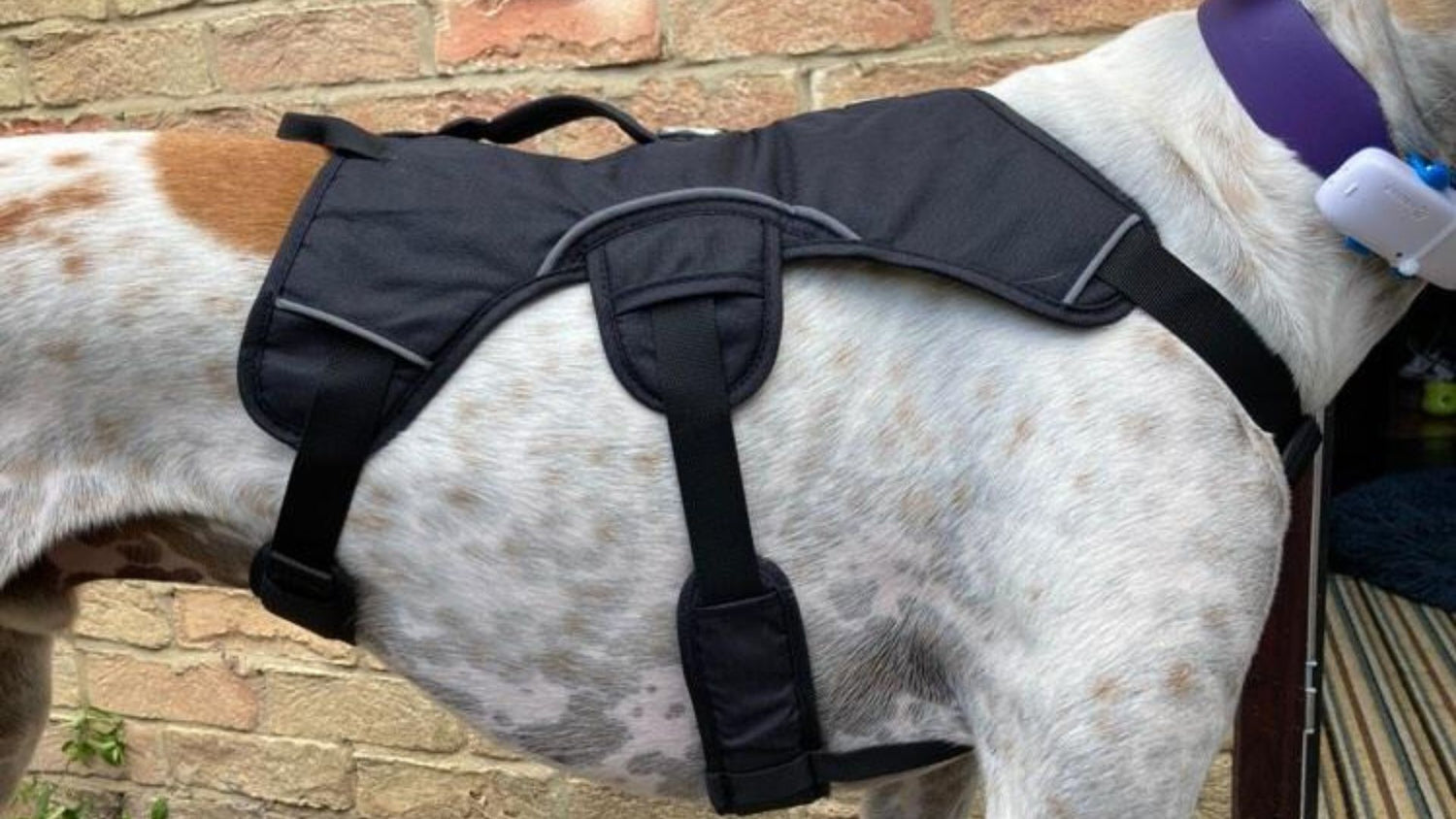
How The Whippet Harness / Greyhound Harness Works
Traditional harnesses do not account for the unique shape of a sighthound or their knack for escaping harnesses.
Our escape proof harness has a third strap which tucks behind the chest which has a smaller measurement, so it physically cannot slide forwards.
FAQs
Does this harness have clips / buckles on both sides?
Yes this harness opens on both sides so your dog doesn't have to step in.
This is perfect for dogs that are paw shy / don't like their paws being touched.
Does the harness have a front clip on the chest?
Yes, this harness includes a front ring which is fantastic to stop pulling.
We also have double ended leads available to pair with this.
How do I choose the right size for my sighthound?
Measure around the widest part of their chest to get their measurement and then choose the corresponding size.
XS - 43-56cm / 17-22" - Recommended for Italian Greyhounds, small Whippets, puppies
S - 53-69cm / 21-27" - Recommended for Whippets and Adolescent dogs
M - 67-83cm / 26-32" - Recommended for Greyhounds, Lurchers, Salukis, Galgos
L - 81-112cm / 32-44" - Recommended for large greyhounds, large lurchers and other large sighthound breeds
Is this harness suitable for cross breeds and non-sighthound breeds?
Absolutely! The harness is really adjustable so you'll be able to get a perfect fit for cross breeds and non-sighthound breeds too!
In fact, we've had professional dog trainers recommend our harness for non-sighthound breeds as well, so you can be assured that it will work for you.
If you order it and feel that it's not quite right, you can return it for a full refund under our Satisfaction Guarantee.
How do I measure my dog for this harness?
To measure your dog for this harness, please take the measurement of the widest part of your dog's chest. We recommend allowing an extra cm or two in the measurement for a comfortable fit.
This is the only measurement you need. As our harness has 6 points of adjustment, you will be able to get an almost custom fit as long as you buy the right size based on the chest measurement.
If you order the wrong size by mistake, don't worry, we are happy to exchange it as part of our 100% satisfaction guarantee.
Can this sighthound harness be used with a coat?
Absolutely! Many owners choose to put the harness on over the coat and that works great and looks very trendy.
If you'd prefer it to go under the coat, you'll need to make sure that your coat has a harness hole in the right position.
We recommend ones with a zipped harness hole as this can be easily adjusted to sit in the right place.
Of course if you need any help or further advice then you can always reach out :)
Why are there no belly measurements?
You only need to measure your dogs chest for the perfect fit.
This harness is made specifically for sighthounds and we're confident in our measurements.
As long as you order the right chest size, you will be able to adjust the belly strap to fit perfectly.
My dog is between sizes, what do I do?
We recommend buying the larger size as our harness can be adjusted to below the recommended sizes. It will allow any growing room and make sure it isn't too tight and you can adjust it down to the right fit.
The only exception to this is if your dog is between a medium to large size. Because it is a big jump between these, we recommend sticking to the medium if it fits your dog's measurements.
If you're really unsure, you can order both sizes and return one. Take care when handling the products and try on the one you think is right first. Our normal returns policy applies.
Which size do you recommend for each breed?
This is not an exhaustive list, and every dog is different, so we would still recommend measuring to make sure you order the right size, however, the below recommendations can be a good guide:
Whippet Harness - Small, or XS for smaller whippets
Greyhound Harness - Medium, or Large for bigger greyhounds
Lurcher Harness - Small, Medium or Large, lurchers really do come in all shapes and sizes :)
Italian Greyhound Harness - XS
Saluki Harness - Medium, or large for bigger salukis
Puppies - Likely an XS or Small, but we recommend measuring and being aware of how much they're likely to grow. If they're close to the next size up it may be worth ordering the larger size so that they can grow into it.
Can my sighthound escape from this harness?
It is virtually impossible. Our sighthound escape proof harness features a unique three-strap design, including a secure third strap.
This third strap tucks behind the chest so that it physically cannot slide forward which makes it escape proof, perfect for houdini dogs.
Is this harness comfortable for extended wear?
Absolutely! The padded design, including the chest piece and belly straps, ensures optimal comfort, making it suitable for both short walks and longer adventures.
The perforated material helps keep your dog cool in summer months.
I'm worried my sighthound won't like wearing a harness?
That's understandable, especially if your sighthound hasn't worn a harness before, but let's put your mind at ease.
So far this hasn't been an issue with any of our customers.
Most are happy right from the get go, but some sighthounds can take a minute to warm up if it's different to what they're used to, but the harness is really comfortable and they'll soon forget that it's even on!
In the unlikely event that your dog is taking longer to adjust, we have this handy blog post to help out :)
How adjustable is this harness?
Our harness offers six points of adjustment, allowing you to customise the fit for your sighthound's unique body shape, ensuring a secure and comfortable fit.
What is the back length of this harness?
The back length, measured as the length of the centre of the back piece on the harness is as follows:
XS - 20cm
Small - 23cm
Medium - 28cm
Large - 34cm
Does the harness restrict movement?
Not at all! The slim chest piece design allows for unrestricted movement, providing your sighthound with the freedom to walk, run, and play comfortably.
Will this harness rub my sighthound?
No, we've taken measures to ensure it won't rub your dog.
The chest piece is slim and the strap that goes underneath leaves plenty of room between the pits / arms. The chest strap is far enough back that this also won't rub the pits / arms, and you can adjust how far back this goes to ensure a comfortable fit.
We've also covered the buckles and padded the straps so these won't rub either.
Is it easy to put on and take off?
Absolutely! The harness is equipped with quick-release buckles, making it quick and effortless to put on and take off your sighthound.
Is this harness lightweight?
Yes! Despite being made from durable materials, the harness is still lightweight.
XS - 160g
Small - 215g
Medium - 296g
Large - 335g
Can I wash the harness?
Yes, the harness is machine washable for easy cleaning.
Can I use this harness in a car?
Yes you can, it is a perfect greyhound car harness, whippet car harness, and is also great for any other sighthound or non-sighthound breed.
We have dog car seat belts available here to use with this harness.
Are the handles durable?
Yes, the multi-function handles are designed to withstand regular use and provide you with optimal control during walks, no matter the situation.
What makes this harness safer than a collar?
Unlike collars that put strain on the neck, our harness distributes any force across the chest, reducing the risk of injury and providing a safer walking experience for your sighthound.
Is this harness suitable for a puppy?
Yes, it will make a great whippet puppy harness or greyhound puppy harness, or any other breed for that matter. It is really adjustable so it should allow plenty of growing room for your puppy too!
How does my purchase contribute to sighthound charities?
We are committed to giving back and donate 10% of all profits to sighthound charities! Find out more here.
What is your returns policy?
We want the best for your dog, so if your order isn't quite right, we're happy for you to return it for a replacement or refund within 30 days.
Please treat the product with care to make sure it is returned in resalable condition.
What is your shipping policy?
We're currently offering Free UK Shipping on all our products when you spend just £10, and aim for delivery in just 2-3 working days.
We also offer same day dispatch Mon - Fri for orders placed before 1pm.
We do also ship internationally - rates will be calculated at checkout.
How does your satisfaction guarantee work?
We offer a 30 day satisfaction guarantee.
You can try it on at home, and in the unlikely event that you don't love it, just return it for a refund or an exchange. It's as simple as that!
You must treat the product with care so that it is returned in a resalable condition.
Is this a no pull dog harness?
Yes, this is a no pull harness. It includes a front clip which you can attach a lead to. This serves to redirect your dog as they pull.
What sighthound breeds is this harness suitable for?
Our harness isn't just a trendy whippet harness, or just for greyhounds, is suitable for all sighthound breeds, including but not limited to, greyhounds, whippets, lurchers, italian greyhounds, salukis, galgos, podencos, wolfhounds, deerhounds, borzois, afghan hounds, cross breeds and more.
What is a 3 strap harness?
A 3 strap harness, also called a 3 point harness, is a harness with 3 'connection' points.
With a connection point on the front of the chest, around the chest and around the belly, ours is a 3 point harness, designed just for sighthounds.
The 3 strap design is considered to be a no escape harness, or an escape proof dog harness.
Is this an escape proof dog harness?
Yes, this is an escape proof dog harness. Thanks to the third strap, it is almost impossible for the harness to slip forwards, making it an anti escape harness / no escape harness / non slip dog harness / anti slip dog harness.
We also like to call it a houdini dog harness because it stops even the best escape artists in their tracks!
What is this harness made from?
Straps: Polyester webbing
Back: Oxford fabric
Padding: Air mesh (polyester)
Buckles: Plastic
Can't find the answer you're looking for? Get in touch if you have any questions!

